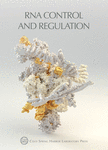The SMN Complex: An Assembly Machine for RNPs
- D.J. BATTLE,
- M. KASIM,
- J. YONG,
- F. LOTTI,
- C.-K. LAU,
- J. MOUAIKEL,
- Z. ZHANG,
- K. HAN,
- L. WAN, and
- G. DREYFUSS
Abstract
In eukaryotic cells, the biogenesis of spliceosomal small nuclear ribonucleoproteins (snRNPs) and likely other RNPs ismediated by an assemblyosome, the survival of motor neurons (SMN) complex. The SMN complex, composed of SMN andthe Gemins (2–7), binds to the Sm proteins and to snRNAs and constructs the heptameric rings, the common cores of Smproteins, on the Sm site (AU5–6G) of the snRNAs. We have determined the specific sequence and structural features ofsnRNAs for binding to the SMN complex and Sm core assembly. The minimal SMN complex-binding domain in snRNAs(except U1) is composed of an Sm site and a closely adjacent 3'stem-loop. Remarkably, the specific sequence of the stemloopis not important for SMN complex binding, but it must be located within a short distance of the 3'end of the RNA foran Sm core to assemble. This minimal snRNA-defining "snRNP code" is recognized by the SMN complex, which binds to itdirectly and with high affinity and assembles the Sm core. The recognition of the snRNAs is provided by Gemin5, a componentof the SMN complex that directly binds the snRNP code. Gemin5 is a novel RNA-binding protein that is critical for snRNPbiogenesis. Thus, the SMN complex is the identifier, as well as assembler, of the abundant class of snRNAs in cells. Thefunction of the SMN complex, previously unanticipated because RNP biogenesis was believed to occur by self-assembly,confers stringent specificity on otherwise potentially illicit RNA–protein interactions.
Footnotes
- Copyright 2006, Cold Spring Harbor Laboratory Press







